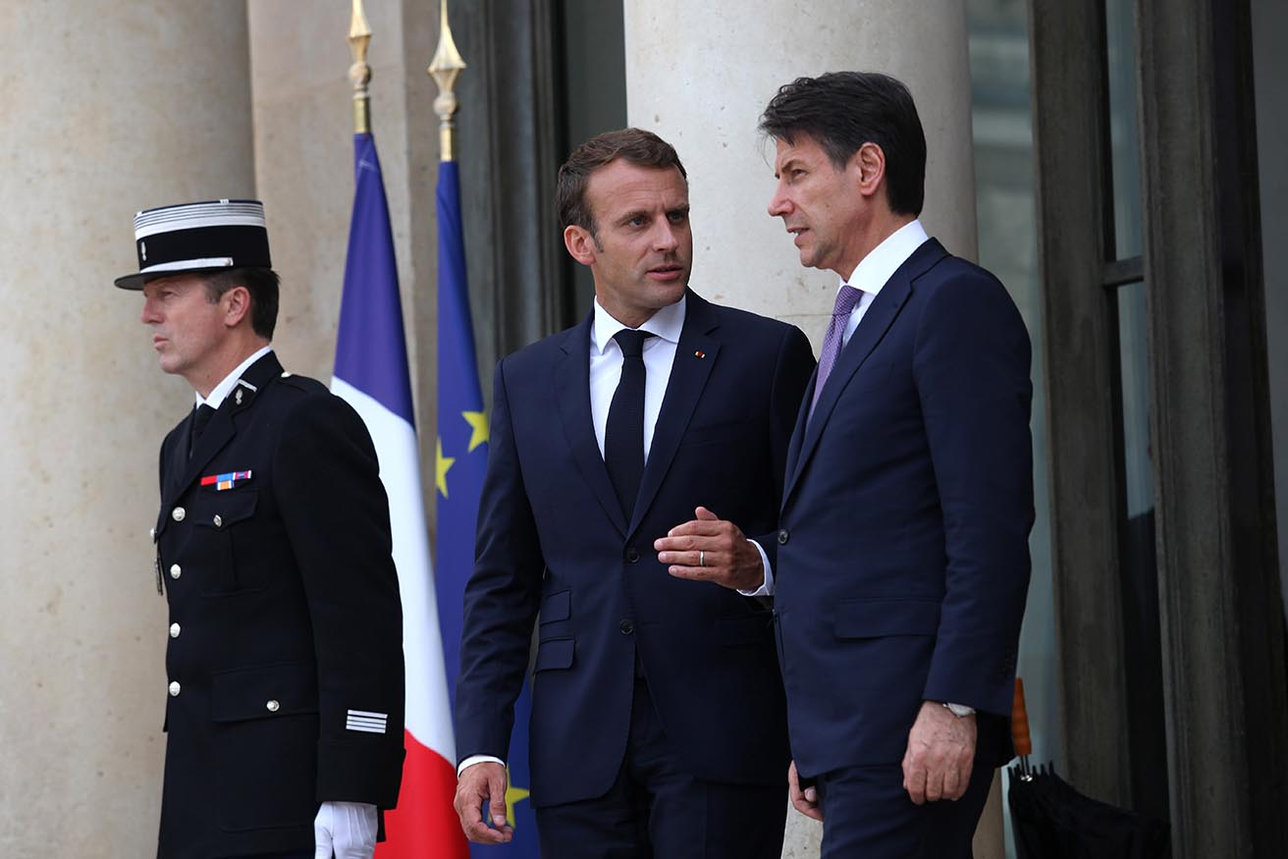
11 Jan 2019
20:20 vision: is the euro at a turning point?
The euro has reached its 20th birthday. But what does the future hold for Europe’s common currency, launched by Wim Duisenberg in 1999?
The euro is 20 years old. The Presidency of the European central bank has passed between three individuals starting with Wim Duisenberg. More than half of its life has been set against the backdrop of a global financial crisis – kickstarted, back in 2007, by subprime mortgage turmoil in the US. Add in the expansion of the EU, to take in Central and Eastern European members in 2004 and 2007; a handful of infamous sovereign debt meltdowns and an extraordinary period of quantitative easing, and it’s been a stormy two decades.
The euro’s next chapter begins with Brexit, and will have to take in political upheaval, economic inequality and radical changes in financial services. The European Central Bank (ECB) has marked the euro’s birthday with the ending of the asset-buying policy that has supported the currency throughout the most tumultuous period of its history, and interest rates are now poised to rise from all-time lows. So, what do the next 20 years really look like for the euro?
The next 12 months will be critical to the future of the common currency. Monetary policy, in particular, will be key.
The euro in 2019
The next 12 months will be critical to the future of the common currency. Monetary policy, in particular, will be key. A number of emergency measures designed to support eurozone economies in the aftermath of the global financial crisis are beginning to be wound down.
The most obvious example is quantitative easing (QE). Despite an economic slowdown, the ECB has pushed ahead with plans to phase out its €2.6trn, three-year bond-buying initiative, launched in March 2015 to rebuild confidence in an economy gripped by deflation.
The ECB reduced its monthly purchase of assets from €30bn to €15bn at the end of September 2018 and called a halt to QE altogether at the start of this year.
Another support initiative, Targeted Longer-term Refinancing Operations, or TLTRO, is due to have its funding expire in 2020. TLTRO was launched in 2014, with a second round in 2016, and has been used to pump more than €700bn into Europe’s financial institutions over the past few years – of which a third has gone to Italian banks and a quarter to Spain. The ECB has yet to offer any further extensions to the programme.
The next step in the EU’s monetary tightening journey is to begin to raise interest rates. Despite downgrading 2019 growth forecasts from 1.8% to 1.7%, and inflation targets from 1.7% to 1.6% in December, the ECB has, over recent months, consistently indicated at least one rate rise in the fourth quarter of this year.
However, comments by ECB policy maker Benoit Coeure on French radio in January, suggested that the bank reserves the right to push the rate rise back if “downside risks” increase and if inflation is not brought closer in line with a 2% target.
Economist Phil Shaw believes that the conditions for an increase this year will be met. And despite Brexit, the threat of protectionism and tensions between member states and the EU itself, he believes the global economy will remain robust in 2019.
“There is increasing evidence that wage pressure is beginning to build in a number of key euro area economies, which is entirely consistent with higher medium-term inflation pressure,” Shaw says. From that starting point, our base case is that we will see two interest rate rises over the second half of 2019.
“The key interest rate, which is the deposit rate, is at -0.4%. We believe that will be non-negative by the end of the year - in other words that it will be at 0%,” Shaw adds. “That is a really important driver which will push the value of the euro up over the next 12 months.”
European Central Bank monetary policy may be the most potent force affecting the fortunes of the euro in 2019, but Brexit is also key. The precise impact of Brexit depends on what sort of Brexit ultimately materialises.
We still believe that a deal will be struck, at the eleventh hour, possibly involving a cross-party motion and most likely in the form of a trade agreement between the UK and EU. A stay of execution, with an extension to Article 50; a vote of no-confidence in the government and subsequent general election, and even a second referendum also remain possibilities.
What is clear is that as time passes, the likelihood of a “hard” Brexit is growing. In this scenario, it is the pound that will take the biggest hit. But there is also an argument that the euro could experience a degree of selling pressure against third party currencies, in recognition that the eurozone is not immune from any disorderly departure of the UK.
Of course, it is important not to be caught too far offside in the event that Brexit is rapidly resolved and sterling rallies. But the majority of our clients have been taking out additional hedging as uncertainty around Brexit persists.
Trade tensions and budget blow-ups
The evolution of trade tensions between the US and China does have the potential to impact the euro over the course of 2019, however. The $300bn of tit-for-tat tariffs may create pockets of opportunity for European agriculture, or consumer goods. But, on balance, a slowdown in global commerce could hit confidence in the export-orientated EU hard.
With a cease-fire agreed on the sidelines of the G20 Summit in December and trade talks taking place this month, we expect at least some easing in trade tensions to take place. This will remove the incentive for investors to flock to safe haven assets such as the dollar, giving the euro an additional boost.
Discover how the Investec Treasury team can help your business manage currency exposure
The third factor influencing the fortunes of the euro this year will be politics. Over the past few months a clear fault line has been exposed with arguments between the Italian and French governments and the European Commission regarding their proposed budgetary stance.
Initial budget proposals from both the populist government in Italy and EU favourite Emmanuel Macron in France, both included a rise in budget deficit above that allowed by Brussels. The stand-off between Brussels and Rome, in particular, hit the euro hard.
Tensions have now eased as the Italian government was forced to climb down, causing the euro to rally. France, meanwhile, was given special dispensation leading to accusations of favouritism and potentially setting the scene for further destabilising squabbling within the eurozone.

EU favourite Emmanuel Macron, centre, has been in continued arguement with Italian governments regarding their budgetary stance
The euro at 40?
The extent to which these budgetary disagreements escalate remains to be seen. But on balance, we do expect the euro to rise over the course of 2019. The common currency’s long-term future, however, will depend on the EU’s ability to rise above recent infighting to forge the level of political integration required to support the euro’s survival.
The extent to which populism continues to grip individual countries like Italy, Germany, Austria, Sweden, France, Hungary and Poland, among others, will also dictate how the euro area evolves.
The asymmetry between a centralised monetary policy and a decentralised fiscal policy – albeit constrained by EU rules – is the major design fault of the euro and some degree of common budget is required to overcome this flaw.
“The degree to which increased political integration can be achieved across the eurozone will be critical,” says Shaw. “There needs to be at least some form of overarching budgetary control, as well as completion of a banking union, for the common currency to flourish.”
The extent to which populism continues to grip individual countries like Italy, Germany, Austria, Sweden, France, Hungary and Poland, among others, will also dictate how the euro area evolves. Italy has already demonstrated how a eurosceptic government, rising to power on a mandate of national sovereignty, can stir up tensions.
However, no government would take the decision to leave the eurozone lightly. Brexit has highlighted the headaches caused by exiting the EU. Those problems would be immensely more complex for a country leaving the single currency, not least choosing a conversion rate, introducing new notes and coins, preventing capital flight and avoiding banking collapse.
The euro’s long-term survival rests, therefore, on strengthening political and economic integration, while avoiding the alienation of populist regimes. It will be a tough balance to strike, with stalemate and inaction the greatest risks.
But let us not forget that the currency that ECB chief Mario Draghi once likened to a bumblebee – a mystery of nature that shouldn’t be able to fly and yet somehow does – has managed to remain airborne through some of the most turbulent times in recent economic history. The euro should not be written off yet.
The opinions and views expressed in this article are for information purposes only and are subject to change without notice. They should not be viewed as recommendations or investment, legal, tax, accounting or other embarking on any course of action.
Discover how the Investec Treasury team can help your business manage currency exposure
Browse articles in



